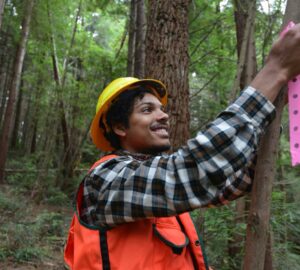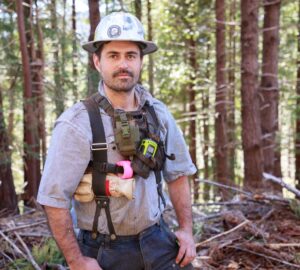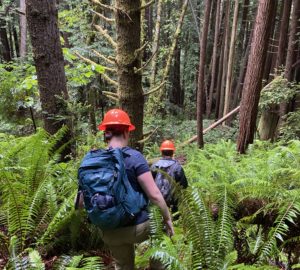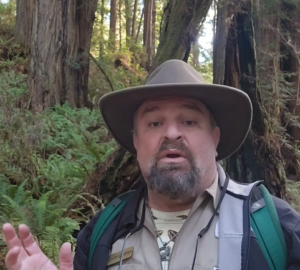
To a large degree, rodents have defined Tim Bean’s career arc: The Humboldt State University assistant professor in the wildlife department made his academic bones with giant kangaroo rats.
“I spent a lot of time in the Carrizo Plain National Monument and Ciervo-Panoche Natural Area, working on kangaroo rat habitat models,” Bean said. “They’re really fascinating animals, and a base prey species for predators in their region, including endangered San Joaquin kit foxes.”
But Bean was happy to jump from kangaroo rats to white-footed voles when the opportunity came up.
“This is our first year on the project, and it’s really exciting,” he said. “This is seminal research, and we’re extremely grateful to the Save the Redwoods League for making it possible.”
White-footed voles were first described in the 19th century, but little information has been gathered on them since specimens were collected in 1899. Given that forest managers have recommended the curtailment of logging and development in white-footed vole habitat, it’s imperative to accrue accurate information on their range and numbers.
“We know they’re here,” said Bean, surveying Patrick’s Point’s luxuriant undergrowth of bracken, salal and thimbleberry, “and we know that we’re not finding many of them. Does that mean they’re rare, or just hard to catch? Are their numbers stable, declining or increasing? We don’t know, but we need to find out. It isn’t just about protecting the white-footed vole – it’s about understanding what’s happening to the forest.”
Check out this video about searching for the elusive white-footed vole!








